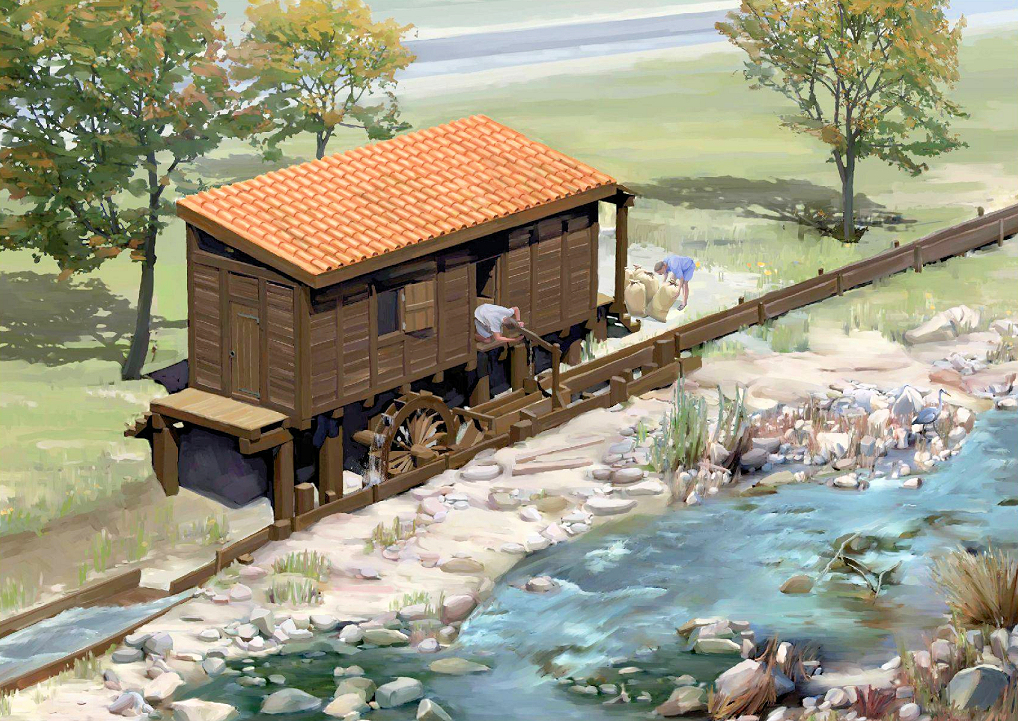There is extensive evidence for artisanal activity in and around the city. Most of the work took place outside the grid with the residential blocks. Documented are potters' workshops, tile yards, metalworking, glass workshops (also of window panes), textile and leatherworking, the production of bone objects, and the activity of painters and mosaicists. Boats were built in the area of the canal.
Plan of the city with indication of workshops in the second and third century. De Pury-Gysel 2012(2), Abb. 53.In the houses 133 handmills for making flour were found. Two watermills for grinding grain have been discovered. The first was in the En Chaplix area to the north of the city. It was built around 60 AD. Basalt millstones were used with a diameter of 0.65 m. Not far away, at the locality Les Tourbières, a second, larger mill was built in the third quarter of the second century, a date provided by the dendrochronology of wooden parts. It too had millstones of volcanic stone.

Reconstructions of the watermill at Les Tourbières. Blanc-Castella 2011, figs. 38-39.
[1-May-2024]